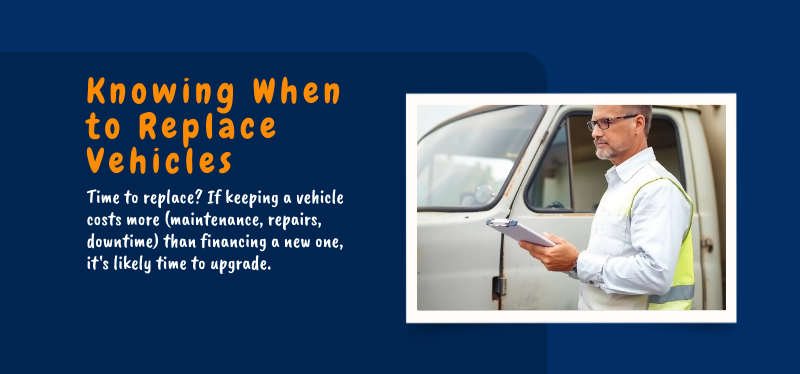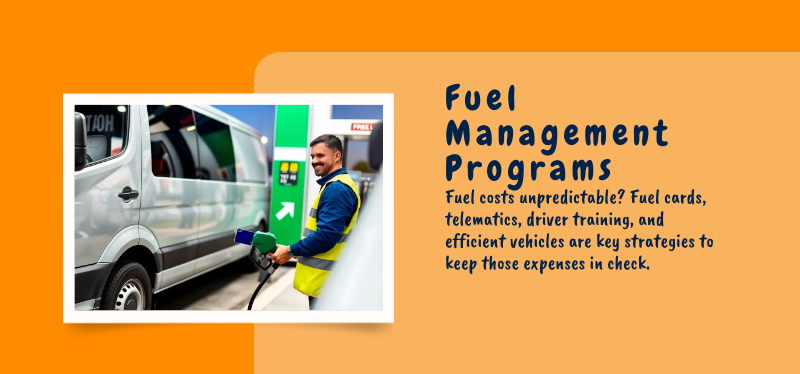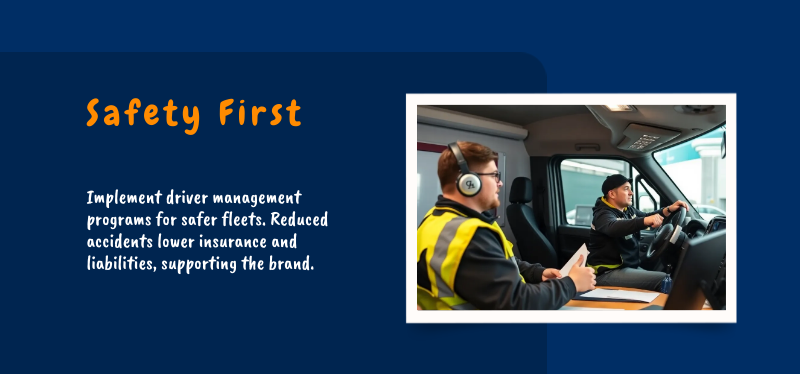Fleet vehicles are everywhere — delivering packages, transporting employees, and supporting field operations. Yet many business leaders aren’t entirely clear on what qualifies as a corporate fleet vehicle, or why fleets are critical to organizational efficiency.
So, what is a corporate fleet vehicle? In the simplest terms:
A corporate fleet vehicle is any car, van, or truck owned, leased, or managed by a company for business operations.
This definition, however, only scratches the surface. Fleet vehicles are more than just company cars; they are strategic assets that impact cost control, employee productivity, customer satisfaction, and risk management.
This guide explores everything executives and decision-makers need to know about corporate fleet vehicles — from definitions and types to benefits, challenges, and future trends.
Defining Corporate Fleet Vehicles
A corporate fleet vehicle can be:
-
Owned or Leased: Businesses may purchase outright or lease through a provider.
-
Passenger or Commercial: Ranging from sedans for sales teams to heavy-duty trucks for logistics.
-
Single or Multiple: A “fleet” can mean just a handful of vehicles or thousands across regions.
Key takeaway: What makes a vehicle part of a corporate fleet isn’t the type, but the fact that it is dedicated to company use and managed within a structured fleet program.
Types of Corporate Fleet Vehicles
Not all fleets look alike. The types of vehicles vary depending on industry and operational needs.
1. Passenger Cars
-
Used by executives, field staff, or sales teams.
-
Often sedans, SUVs, or compact cars.
-
Focus on comfort, fuel efficiency, and brand image.
2. Vans and Light Commercial Vehicles
-
Common in delivery, service, and trades (electricians, HVAC, plumbing).
-
Emphasis on cargo space, reliability, and customization (e.g., shelving).
3. Trucks
-
Light, medium, or heavy-duty depending on industry needs.
-
Critical in construction, logistics, and supply chain operations.
4. Specialty Vehicles
-
Includes ambulances, utility repair trucks, or vehicles outfitted with unique equipment.
-
Often governed by stricter regulatory requirements.
5. Pool Cars
-
Shared vehicles available for employees on an as-needed basis.
-
Useful in organizations with occasional travel requirements.
Executive insight: Choosing the right vehicle mix directly impacts costs, efficiency, and safety.
Why Businesses Use Corporate Fleet Vehicles
Fleet vehicles are not just “transportation.” They are tools that:
-
Enable Productivity: Field workers, sales reps, and delivery drivers rely on them to do their jobs.
-
Support Brand Presence: Company-branded vehicles act as mobile billboards.
-
Ensure Customer Service: Faster deliveries and service appointments increase satisfaction.
-
Control Costs: Owning or leasing vehicles strategically can be cheaper than reimbursing employees for personal car use.
-
Manage Risk: Fleets allow companies to enforce safety, maintenance, and insurance standards.
Fleet Ownership vs. Employee Reimbursement
Many companies debate whether to provide corporate fleet vehicles or reimburse employees for using personal cars.
| Factor | Corporate Fleet Vehicles | Employee Reimbursement |
|---|---|---|
| Cost Control | Predictable fleet expenses | Variable, based on mileage rates |
| Brand Visibility | High (branded vehicles) | None |
| Safety Oversight | Company-managed standards | Harder to regulate |
| Employee Satisfaction | Convenient and consistent | Employees cover wear and tear |
| Tax & Compliance | Centralized reporting | Risk of misreported mileage |
Key takeaway: Fleets give businesses more control, while reimbursement shifts responsibility to employees. The right choice depends on industry, geography, and scale.
Benefits of Corporate Fleet Vehicles
-
Operational Efficiency
Vehicles tailored to business tasks increase productivity and reduce downtime. -
Cost Savings
Bulk purchasing, leasing agreements, and centralized maintenance drive down per-vehicle costs. -
Branding Opportunities
Company logos on vehicles build awareness everywhere they travel. -
Safety & Compliance
Fleets allow businesses to enforce driver training, vehicle inspections, and compliance with regulations. -
Data & Analytics
With telematics, companies can track usage, fuel, and maintenance, leading to smarter decision-making.
Challenges of Managing Fleet Vehicles
While fleets provide benefits, they also introduce challenges executives must plan for:
-
Upfront Costs: Purchasing or leasing vehicles requires capital.
-
Maintenance & Downtime: Poor planning leads to costly breakdowns.
-
Driver Safety Risks: Accidents increase liability and insurance costs.
-
Fuel Costs: Volatile prices affect operating budgets.
-
Regulatory Compliance: Varies by industry (e.g., DOT, OSHA, emissions laws).
Insight: These challenges explain why many companies invest in fleet management programs or outsource to professional fleet service providers.
Total Cost of Ownership (TCO) and Cost-Per-Mile: Key Formulas and Insights
Snippet-ready definition:
-
Total Cost of Ownership (TCO) = Purchase/Lease Cost + Fuel + Maintenance & Repairs + Insurance + Licensing & Fees + Depreciation + Financing + Downtime.
-
Cost-per-Mile (CPM) = Total Operating Cost ÷ Total Miles Driven.
These two formulas are the backbone of fleet financial analysis. By using them, executives can quickly evaluate whether vehicles are operating efficiently or draining resources.
Why TCO Matters
-
Budget Accuracy: Moves beyond sticker price to capture the true long-term expense.
-
Lifecycle Planning: Helps determine the optimal replacement schedule to avoid vehicles becoming “money pits.”
-
Policy Justification: Supports decisions on electrification, leasing vs. owning, or investing in telematics.
Benchmarks and Executive Takeaway
Industry data shows that vehicle depreciation, fuel, and labor are the three largest contributors to total cost. For light-duty corporate fleets, annual ownership averages exceed $12,000 per vehicle, while heavy trucks often measure efficiency in dollars per mile, where even a few cents of difference can mean millions annually across large fleets.
Key takeaway for decision-makers: Don’t focus only on purchase price — a fleet’s cost profile depends far more on ongoing variables like utilization, maintenance, and downtime.
Lifecycle Management: Knowing When to Replace Vehicles
One of the most common questions fleet managers face is: When should we replace a fleet vehicle?
Snippet-ready answer:
The optimal replacement point is when the marginal cost of keeping a vehicle (maintenance, repairs, downtime) exceeds the cost of financing a newer vehicle.
Indicators a Vehicle Needs Replacement
-
High Cost-per-Mile: Costs continue rising year over year.
-
Frequent Breakdowns: Increasing downtime interrupts operations.
-
Safety Concerns: Vehicles no longer meet safety or emissions standards.
-
Technology Gaps: Outdated vehicles lack telematics or fuel-saving features.
Strategies to Maximize Lifecycle Value
-
Establish replacement cycles (e.g., 5 years or 100,000 miles for passenger cars, 7–10 years for trucks).
-
Track cost-per-mile over time and replace when thresholds are exceeded.
-
Use predictive analytics to forecast future repair costs.
Sustainability and the Rise of Electric Fleet Vehicles
Snippet-ready definition:
A corporate electric fleet vehicle is any car, van, or truck powered fully or partially by electricity, deployed by a company for operational use.
Why EVs Are Entering Fleets
-
Fuel Savings: Electricity costs less per mile compared to gasoline or diesel.
-
Lower Maintenance: EVs have fewer moving parts, reducing repair costs.
-
Sustainability Goals: Many companies set carbon-reduction targets, and vehicles are a big contributor.
-
Regulatory Compliance: Governments are mandating emissions reductions and offering incentives for EV adoption.
Challenges to Consider
-
Charging Infrastructure: Requires upfront investment in on-site charging stations.
-
Range Limitations: Some EVs may not suit long-haul or rural routes.
-
Depreciation Uncertainty: Residual values for commercial EVs are still stabilizing.
Key takeaway: EVs won’t replace all fleet vehicles overnight, but hybrid adoption strategies — where certain routes or vehicle types are electrified first — provide cost and sustainability wins.
Fuel Management Programs: Controlling Volatile Costs
Fuel remains one of the largest and most unpredictable expenses for fleets. Implementing structured fuel management is critical.
Snippet-ready strategies:
-
Fuel Cards: Track usage, prevent fraud, and collect per-transaction data.
-
Telematics Monitoring: Optimize routes to minimize idle time and unnecessary mileage.
-
Driver Training: Encourage fuel-efficient driving habits (smooth acceleration, reduced idling).
-
Vehicle Selection: Choose models with better fuel efficiency or alternative powertrains.
Executive insight: Even a 5% improvement in fleet fuel efficiency can deliver six-figure savings annually for mid-sized fleets.
Fleet Insurance: Coverage Essentials
Insurance is a mandatory cost but also a strategic lever.
Snippet-ready definition:
Fleet insurance is a policy that covers multiple corporate vehicles under one plan, often at lower per-vehicle rates compared to individual coverage.
What Corporate Fleet Insurance Typically Covers
-
Liability (bodily injury and property damage)
-
Collision and comprehensive coverage
-
Uninsured/underinsured motorist protection
-
Optional add-ons (roadside assistance, rental reimbursement)
Factors Affecting Premiums
-
Driver records and training
-
Vehicle types and age
-
Geographic operating regions
-
Claims history
Key takeaway: Safer fleets with fewer claims often qualify for lower premiums, making investment in driver training and dashcam technology directly tied to cost control.
Safety and Driver Management Programs
Corporate fleets are only as safe as the employees behind the wheel. Establishing a structured driver program is non-negotiable.
Snippet-ready checklist:
-
Mandatory background checks and driving record reviews
-
Initial and ongoing driver safety training
-
Telematics monitoring for speed, harsh braking, or distracted driving
-
Clear policy on personal vs. business use of vehicles
-
Regular communication on safety metrics and expectations
Business Impact
-
Reduced accidents lower insurance costs and legal liabilities.
-
Safer fleets support brand reputation.
-
Employees feel more secure, improving retention in driver-heavy industries.
Fleet Management Technology: Telematics and Dashcams
Technology is transforming how companies manage their fleets.
Telematics
-
Real-time GPS tracking for route optimization.
-
Automatic maintenance reminders.
-
Data collection on fuel efficiency and driver behavior.
Dashcams
-
Video evidence reduces liability in accidents.
-
Deters fraud and false claims.
-
Encourages safe driving behavior.
Key takeaway: Telematics and dashcams move fleets from reactive management to proactive risk reduction and cost control.
Outsourcing vs. In-House Fleet Management
Not every business wants to manage fleet operations internally.
Outsourcing Benefits
-
Access to professional expertise.
-
Reduced administrative burden.
-
Scalable solutions for growth or contraction.
In-House Benefits
-
Full control of policies and operations.
-
Potentially lower long-term costs if scale is sufficient.
-
Easier integration with company culture and policies.
Executive decision point: Small to mid-sized fleets often benefit from outsourcing, while very large fleets can justify in-house departments.
Checklist: Optimizing Corporate Fleet Vehicles
Snippet-ready checklist for executives:
-
Calculate total cost of ownership (TCO) and cost-per-mile.
-
Establish vehicle replacement cycles based on lifecycle analysis.
-
Adopt sustainability initiatives (EVs, hybrids, fuel-efficient models).
-
Implement structured fuel management programs.
-
Secure comprehensive fleet insurance with risk-based discounts.
-
Build driver training and monitoring programs.
-
Leverage telematics and dashcams for data-driven decisions.
-
Decide whether outsourcing or in-house management is more cost-effective.







